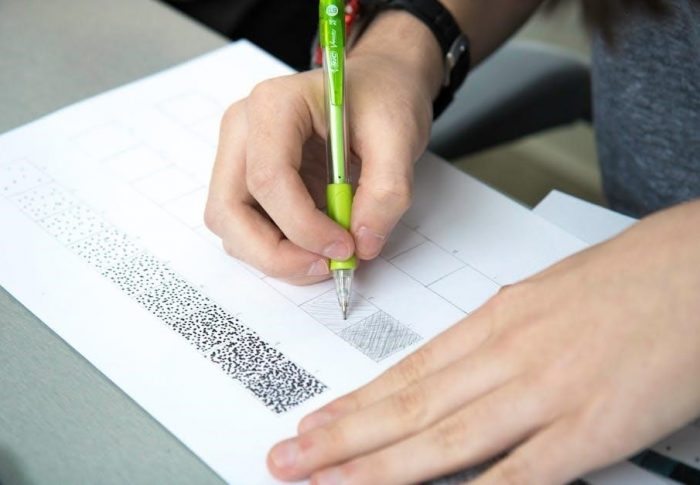
free 3 yard quilt patterns to download pdf free download
Free 3-Yard Quilt Patterns⁚ A Comprehensive Guide
Discover a world of free downloadable PDF quilt patterns, perfect for beginners and experienced quilters alike. Explore diverse designs, from simple squares to intricate stars, all achievable with just three yards of fabric. Find easy-to-follow instructions and helpful tips to ensure a successful project. Numerous online resources offer free patterns and helpful tutorials, empowering you to create beautiful quilts efficiently.
Finding Free Downloadable PDF Patterns
The internet offers a treasure trove of free, downloadable PDF quilt patterns. Many websites and blogs dedicated to quilting provide these patterns, often showcasing a variety of styles and skill levels. Look for keywords like “free 3-yard quilt pattern PDF download” or “free downloadable quilt patterns for beginners.” Be sure to check the pattern’s description for details on the finished size, fabric requirements, and difficulty level before downloading. Some sites offer a collection of patterns, allowing you to browse various designs and choose one that suits your preferences and skill set. Remember to carefully review the instructions and diagrams within the PDF before starting your project to avoid any confusion or errors. Always download from reputable sources to ensure accurate and well-written instructions.
Reliable Sources for Free Patterns
Several reputable online platforms offer free 3-yard quilt patterns. Blogs dedicated to quilting often feature free patterns, accompanied by tutorials and helpful tips. These blogs frequently showcase various quilters’ work, providing inspiration and diverse pattern options. Check out established quilting websites; many offer a selection of free patterns alongside their paid options. Online quilting communities and forums also serve as excellent resources. Members often share their patterns or link to external sites offering free downloads. Always verify the source’s credibility before downloading any pattern. Look for websites with positive reviews and a history of providing accurate and well-written instructions. Cross-referencing information with other sources can also help ensure the pattern’s reliability and quality before committing to a project.
Popular 3-Yard Quilt Pattern Designs
The versatility of three-yard quilt patterns allows for a wide range of designs. Simple patterns featuring squares and triangles are popular choices for beginners, offering quick and satisfying results. These designs are often easily adaptable, allowing for creative variations in color and fabric choices; More experienced quilters might opt for patterns incorporating intricate blocks, such as stars or pinwheels, creating visually stunning quilts. Many free patterns incorporate a combination of simple and more complex blocks, offering a balanced challenge. Some patterns focus on specific themes, such as floral motifs, geometric designs, or even seasonal themes. The availability of numerous free patterns allows quilters to explore different aesthetics and techniques, expanding their skills and creativity. Consider the level of your experience and the desired aesthetic when choosing a pattern. The abundance of options ensures there’s a perfect three-yard quilt pattern to suit every skill level and personal style.
Easy-to-Follow Instructions and Tutorials
Many free downloadable 3-yard quilt patterns boast clear, concise instructions designed for ease of understanding, regardless of your skill level. Detailed diagrams often accompany written instructions, visually guiding you through each step of the process. These diagrams break down complex techniques into manageable segments, making even intricate patterns accessible. Tutorials, frequently included or readily available online, provide step-by-step video demonstrations, further enhancing comprehension. These visual aids are especially beneficial for those new to quilting or tackling more challenging designs. Look for patterns that offer multiple visual aids, including diagrams and videos. The best patterns use a combination of detailed written steps and accompanying images to ensure clarity and minimize potential confusion. Remember to carefully read through all instructions before beginning to sew, and don’t hesitate to consult tutorials for extra assistance. With these resources, even complex patterns become achievable projects.
Choosing the Right Fabric for Your Project
Fabric selection significantly impacts the final look and feel of your 3-yard quilt. Consider the pattern’s complexity; simpler designs can accommodate a wider variety of fabrics, while intricate patterns might benefit from fabrics with specific characteristics. Cotton is a popular choice for its breathability, softness, and ease of sewing. However, other fabrics like linen or flannel offer unique textures and aesthetics. Before purchasing, examine the fabric’s weight; heavier fabrics are suitable for sturdier quilts, while lighter fabrics are ideal for softer, drapier designs. Pre-washing your fabric is crucial to prevent shrinkage after the quilt is completed. Pay attention to the pattern’s recommended fabric yardage; accurately calculating your needs prevents unexpected shortages. Matching colors and patterns thoughtfully enhances the visual appeal, while contrasting fabrics add a bold, modern touch. Ultimately, the best fabric choice depends on your personal preferences and the overall design vision for your quilt.
Tips and Tricks for Successful 3-Yard Quilting
Maximize your fabric’s potential by employing efficient cutting techniques. Accurate measurements are paramount; use a rotary cutter and mat for precise cuts, minimizing fabric waste. Pre-pressing seams before sewing prevents puckering and ensures clean lines. A walking foot on your sewing machine enhances fabric feeding, especially with multiple layers. Consider using a contrasting thread for quilting to create visual interest and highlight the pattern’s design elements. For a professional finish, carefully press each seam allowance open to ensure flatness and prevent bulkiness. When piecing, pay attention to seam alignment to avoid mismatched blocks and maintain a clean, uniform appearance. Utilize a quilting ruler and rotary cutter to trim away excess fabric around blocks, ensuring precise dimensions. Before binding, press the quilt top to remove any wrinkles or creases. Choose a binding fabric that complements the quilt’s colors or patterns, creating a cohesive final look. Remember to leave sufficient fabric for the binding to wrap around the quilt’s edges.

Enlarging Patterns for Larger Quilts
Transform your favorite 3-yard quilt patterns into larger versions using simple scaling techniques. Many patterns offer instructions for increasing size; otherwise, utilize grid methods or digital pattern design software for accurate enlargement, ensuring consistent proportions throughout your project.
Techniques for Scaling Up Patterns
Several methods exist for enlarging free 3-yard quilt patterns; A straightforward approach involves using grid-based scaling. Print the pattern, overlay a grid, and then enlarge the grid onto a larger piece of paper. Carefully redraw the pattern elements onto the new, larger grid, maintaining accurate proportions. Alternatively, utilize digital tools. Many free or paid software programs allow you to upload a PDF pattern and increase its size by a specified percentage or to specific dimensions. This ensures precise scaling and prevents distortion. Remember to account for seam allowances when scaling up. Another simple technique, suitable for simpler patterns, is to measure and multiply each dimension of the pattern pieces by the desired scaling factor. However, this requires careful calculation and might not work well for complex designs. Always test your scaling method on a small scrap before applying it to your final fabric. This allows you to adjust your technique and ensure accurate results.
Adapting Patterns to Different Sizes
Adapting free 3-yard quilt patterns to different sizes requires careful consideration of several factors. The simplest method involves proportionally increasing or decreasing the dimensions of each pattern piece. This can be achieved using grid-based scaling or digital software, ensuring consistent proportions. However, for more complex designs, simply scaling might not suffice. You might need to adjust the number of blocks or rows to accommodate the desired size. This requires careful calculation and planning to maintain the overall design’s aesthetic balance. Consider the fabric requirements; larger quilts naturally need more fabric. You may need to source additional yardage or creatively repurpose existing fabrics. Remember that border widths and seam allowances also need adjustment to maintain the intended aesthetic. For significant size increases, it’s often easier to create a completely new pattern based on the original design’s underlying structure, rather than simply scaling. Experiment with different approaches to find the best method for your specific pattern and desired size.
Using Different Fabric Amounts for Size Adjustments
Modifying a 3-yard quilt pattern’s size often necessitates altering the fabric quantity. Simple scaling might not accurately predict the required yardage. For instance, increasing the quilt’s dimensions by 50% doesn’t automatically mean you need 1.5 times the fabric. Seams, borders, and design elements all contribute to the overall fabric consumption. A larger quilt will require proportionally more fabric for these components. To accurately estimate fabric needs, consider the pattern’s individual pieces. Measure their scaled dimensions, then calculate the fabric required for each piece, accounting for seam allowances and waste. Add this for all pieces, including borders and binding, to determine the total yardage. Online quilt calculators can assist in these calculations. They often incorporate seam allowance and waste factors, providing more accurate estimations than simple proportional scaling. Remember that fabric selection influences yardage needs; some fabrics might require more for pattern matching or directional prints. Always add extra fabric for potential errors or unexpected adjustments during the quilting process.

Additional Resources and Inspiration
Expand your quilting horizons! Explore online communities, blogs, and books brimming with free patterns and tutorials. Discover fresh design ideas and connect with fellow enthusiasts for support and inspiration.
Online Communities and Forums
The internet offers a vibrant tapestry of online quilting communities and forums, serving as invaluable resources for those seeking free 3-yard quilt patterns. These digital hubs bring together quilters of all skill levels, fostering a collaborative environment where knowledge is freely shared and inspiration abounds. Within these online spaces, you’ll discover a wealth of free downloadable PDF patterns, ranging from simple beginner-friendly designs to more intricate projects for experienced quilters. Members readily share their expertise, offering advice, tips, and troubleshooting assistance. Discussions often revolve around fabric choices, sewing techniques, and pattern adaptations, creating a supportive atmosphere where questions are welcomed and problems are solved collectively. Furthermore, many forums feature dedicated sections for showcasing completed projects, allowing members to admire each other’s work and gain inspiration for their next quilting endeavor. The sense of community fostered within these online groups is unparalleled, providing a valuable network of support and encouragement for those embarking on their quilting journeys.
Books and Magazines Featuring 3-Yard Quilts
Numerous quilting books and magazines dedicate sections or entire publications to the art of crafting quilts using only three yards of fabric. These resources offer a curated collection of patterns, often accompanied by detailed instructions, photographs, and helpful tips. Many publications feature interviews with renowned quilters, sharing their design philosophies and techniques. Beyond patterns, these resources provide valuable insights into fabric selection, color coordination, and quilting techniques. Some books focus on specific design styles, like traditional patchwork or modern geometric patterns, while others explore various skill levels, catering to both beginners and experienced quilters. The visual nature of these publications makes them particularly helpful, allowing readers to see the finished projects and envision their own creations. Often, these books and magazines offer step-by-step instructions, complete with diagrams and illustrations, simplifying the quilting process and making it accessible to a wider audience. They serve as a valuable addition to any quilter’s library, offering both inspiration and practical guidance; Consider exploring both physical copies and digital versions for broader access.
Blogs and Websites with Free Patterns
The internet offers a vast landscape of blogs and websites dedicated to quilting, many of which provide free downloadable 3-yard quilt patterns. These online resources often feature a diverse range of styles, from beginner-friendly projects to more complex designs. Many blogs offer tutorials and detailed instructions alongside their patterns, guiding users through each step of the process. Websites dedicated to quilting often categorize their patterns by skill level, making it easy to find projects that match your experience. Many bloggers share their personal experiences and tips, creating a supportive community for quilters of all skill levels. These online platforms frequently showcase finished projects, providing visual inspiration and demonstrating the potential of the patterns. In addition to patterns, blogs and websites often include articles on fabric selection, quilting techniques, and other relevant topics, enhancing the overall learning experience. Searching online using keywords like “free 3-yard quilt patterns,” “easy quilt patterns,” or specific design styles will yield a wealth of results, allowing you to browse and download patterns that suit your tastes and abilities. Remember to check reviews and comments to ensure pattern clarity and accuracy before embarking on your project.






